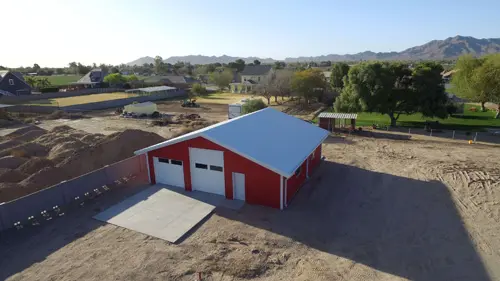Why Choose Metal Barns? Exploring the Benefits of Steel Agricultural Structures

When it comes to constructing agricultural structures, the choice of materials can significantly impact the efficiency, cost, and longevity of the project. In recent years, metal barns, specifically those built with steel, have gained significant popularity among farmers and ranchers. The shift from traditional wooden barns to metal structures is driven by several compelling benefits that steel offers. Here, we explore why metal barns are becoming the preferred choice for modern agricultural needs.
Durability and Longevity
One of the standout features of metal barns is their exceptional durability. Steel, the most common metal used, is well-known for its strength and resilience. Unlike wood, which can succumb to rot, mold, and pest infestation, metal barns are impervious to many environmental threats.
- Weather Resistance: Metal barns can withstand harsh weather conditions, including heavy snow, hurricanes, and high winds, far better than wooden structures. The robustness of steel ensures that the barn maintains its integrity over years, providing reliable shelter for livestock, equipment, and stored goods.
- Fire Resistance: Steel is naturally fire-resistant, a crucial advantage that can prevent catastrophic losses. For agricultural operations where hay storage – a significant fire risk – is common, the fire safety of metal barns offers an extra layer of security.
Cost-Effectiveness
While the initial investment in a metal barn may be higher than in a wooden barn, the long-term savings are significant. Metal barns require minimal maintenance, which reduces ongoing costs associated with repairs and replacements.
- Low Maintenance: Metal surfaces resist the wear and tear that affects wooden structures. They do not need painting or staining regularly, and problems like wood rot are non-existent.
- Energy Efficiency: Modern metal barns can be equipped with insulated panels, which help in maintaining internal temperature. This insulation capability makes it more energy-efficient, keeping interiors cooler in summer and warmer in winter, and can significantly reduce heating and cooling costs.
Flexibility and Customization
Metal barns offer remarkable flexibility in design. Whether you need a simple, open structure or a complex, multi-functional building, steel construction can accommodate a wide range of architectural styles and purposes.
- Adaptability: The structural strength of steel allows for larger clear spans without internal support columns. This feature provides vast, unobstructed interior spaces that are ideal for storage, machinery housing, or even indoor riding arenas.
- Customization: Manufacturers can pre-engineer metal barns to meet specific requirements, adjusting dimensions, roof styles, door types, and more. Additionally, features such as skylights, windows, and various door configurations can easily be integrated to enhance functionality and aesthetics.
Eco-Friendliness
Choosing a metal barn also supports sustainability efforts, which is increasingly important in modern agriculture.
- Recyclability: Steel is one of the most recycled materials in the world. Most metal barns are made from a significant percentage of recycled steel, and at the end of their lifecycle, the materials can be recycled again, reducing waste and resource consumption.
- Sustainability: The production of steel has become more energy-efficient over the years, with a significant reduction in energy consumption and carbon emissions during manufacturing.
Conclusion
Choosing a metal barn offers a multitude of advantages for modern agricultural operations. The durability, cost-effectiveness, flexibility, and environmental benefits make metal barns a smart investment for farmers and ranchers looking to optimize their operations and minimize their ecological footprint. As the agricultural industry evolves, the trend towards more sustainable and resilient structures like metal barns is likely to continue, supporting a future where farming becomes increasingly efficient and sustainable.
